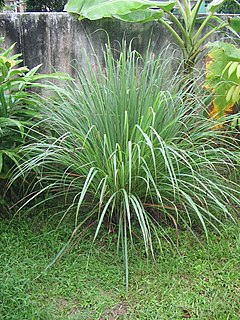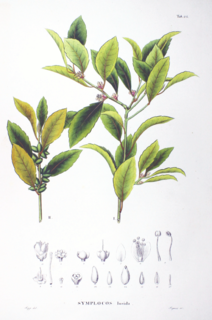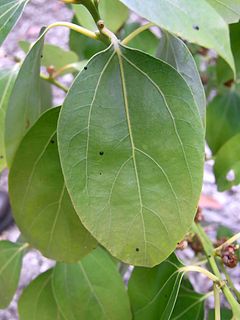
Cymbopogon, also known as lemongrass, barbed wire grass, silky heads, Cochin grass, Malabar grass, oily heads, citronella grass or fever grass, is a genus of Asian, African, Australian, and tropical island plants in the grass family. Some species are commonly cultivated as culinary and medicinal herbs because of their scent, resembling that of lemons . The name cymbopogon derives from the Greek words kymbe and pogon "which mean [that] in most species, the hairy spikelets project from boat-shaped spathes." Lemongrass and its oil are believed to possess therapeutic properties.

Citronella oil is an essential oil obtained from the leaves and stems of different species of Cymbopogon (lemongrass). The oil is used extensively as a source of perfumery chemicals such as citronellal, citronellol, and geraniol. These chemicals find extensive use in soap, candles and incense, perfumery, cosmetic, and flavouring industries throughout the world. Citronella oil is also a plant-based insect repellent and has been registered for this use in the United States since 1948. The United States Environmental Protection Agency considers oil of citronella as a biopesticide with a non-toxic mode of action.

Mallotus is a genus of the spurge family Euphorbiaceae first described as a genus in 1790. Two species are found in tropical Africa and Madagascar. All the other species are found in East Asia, the Indian Subcontinent, Southeast Asia, eastern Australia, and certain islands of the western Pacific. The genus has about 150 species of dioecious trees or shrubs.

Elaeocarpus is a genus of nearly five hundred species of flowering plants in the family Elaeocarpaceae native to the Western Indian Ocean, Tropical and Subtropical Asia, and the Pacific. Plants in the genus Elaeocarpus are trees or shrubs with simple leaves, flowers with four or five petals usually, and usually blue fruit.

Calophyllum inophyllum is a large evergreen plant, commonly called tamanu, oil-nut, mastwood, beach calophyllum or beautyleaf. It is native to tropical Asia and Wallacea. Due to its importance as a source of timber for the traditional shipbuilding of large outrigger ships, it has been spread in prehistoric times by the migrations of the Austronesian peoples to the islands of Oceania and Madagascar, along with other members of the genus Calophyllum. It has since been naturalized in regions in the East African coast. It is also a source of the culturally important tamanu oil.

Cinnamomum camphora is a species of evergreen tree that is commonly known under the names camphor tree, camphorwood or camphor laurel.

Myrmarachne is a genus of ant-mimicking jumping spiders that was first described by W. S. MacLeay in 1839. They are commonly called antmimicking spiders, but they are not the only spiders that have this attribute. The name is a combination of Ancient Greek μύρμηξ, meaning "ant", and ἀράχνη, meaning "spider".

Symplocos is a genus of flowering plants in the order Ericales. It contains about 300 species distributed in Asia and the Americas. Many species grow in humid tropical regions. This is sometimes considered to be the only genus in family Symplocaceae. Plants in this family are shrubs and trees with white or yellow flowers.

Actinodaphne is an Asian genus of flowering plants in the laurel family (Lauraceae). It contains approximately 121 species of dioecious evergreen trees and shrubs.

Neolitsea dealbata, also known as hairy-leaved bolly gum, is a shrub or tree, in the family Lauraceae, which is native to Australia.
Neolitsea fischeri is a species of plant in the family Lauraceae. It is a small tree endemic to the Anaimalai and Palni Hills in southern India.

Dimeria is a genus of Asian, Australian, Madagascan, and Pacific Island plants in the grass family. Many of the species are endemic to India.

The Asia Rugby Women's Sevens Series is the regional championship for women's international rugby sevens in Asia. Initially contested as a single tournament, the championship was expanded into a two-tournament series in 2014. The competition is sanctioned and sponsored by Asia Rugby, which is the rugby union governing body for the region.

Acronychia pedunculata is a large shrub or small tree of the understory, gaps and fringes of low country and lower hill tropical forests of tropical Asia. Leaves: elliptic to subolong, often with tapered base. Twigs more or less angular, glabrous. Flowers: greenish white; I-acillary, corymbose panicles, about 14 mm (0.6 in) across in inflorescences of 4–24 cm (2–9 in) wide. Flowering: February–April, July–August. The fruits are cream to brownish yellow drupes, slightly angled, 0.5–1.5 cm (0.2–0.6 in) in diameter with a short apiculate tip. Leaves and fruits, and other parts of the plant, contain aromatic oils with a resinous scent. In Sri Lanka, the flowering time is February–April and July–August.
Gibbovalva quadrifasciata is a moth of the family Gracillariidae. It is known from Australia, China, India, Java, Japan, Myanmar, Sri Lanka and Taiwan.

Neolitsea australiensis, also known as the green bolly gum, is an Australian rainforest tree, in the laurel family. The specific epithet is derived from "Australia", and the Latin "ensis"; meaning "native of Australia".

α-Cadinol or 10α-hydroxy-4-cadinene is an organic compound, a sesquiterpenoid alcohol.

Neolitsea parvigemma is a species of small to medium-sized tree in the family Lauraceae. It is endemic to Taiwan, and confined to the south central mountain regions of the island.

Neolitsea aciculata is a species of small evergreen tree in the family Lauraceae. It is found in Japan and Taiwan. In Taiwan, it grows often in mixed coniferous and broad-leaved forests in valleys throughout the island.

Neolitsea sericea is a species of tree in the family Lauraceae. It is found in China, Taiwan, south Korea, and Japan. Its natural habitat is on forest margins and slopes, and it is often found in well-progressed secondary forests.


















